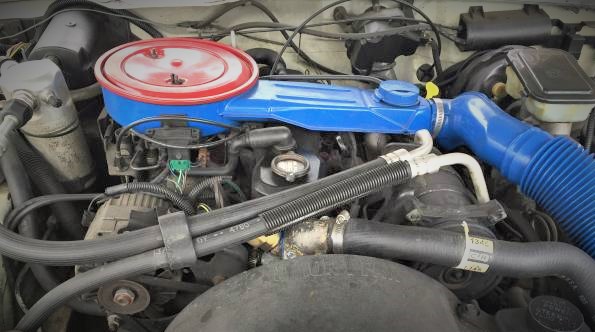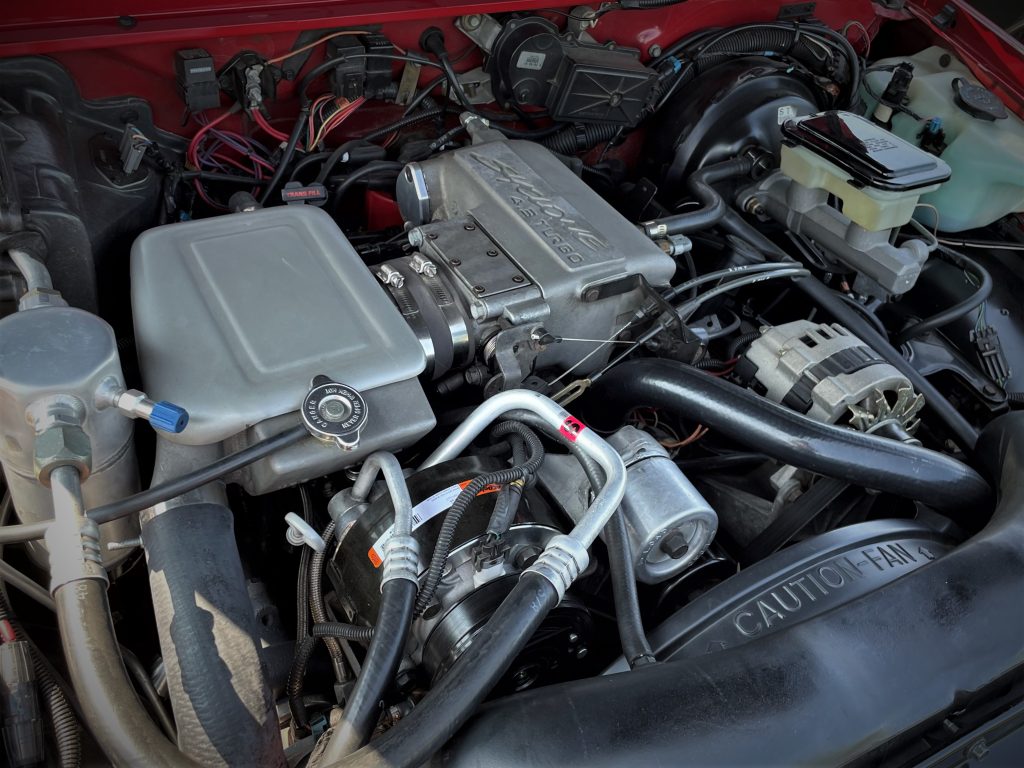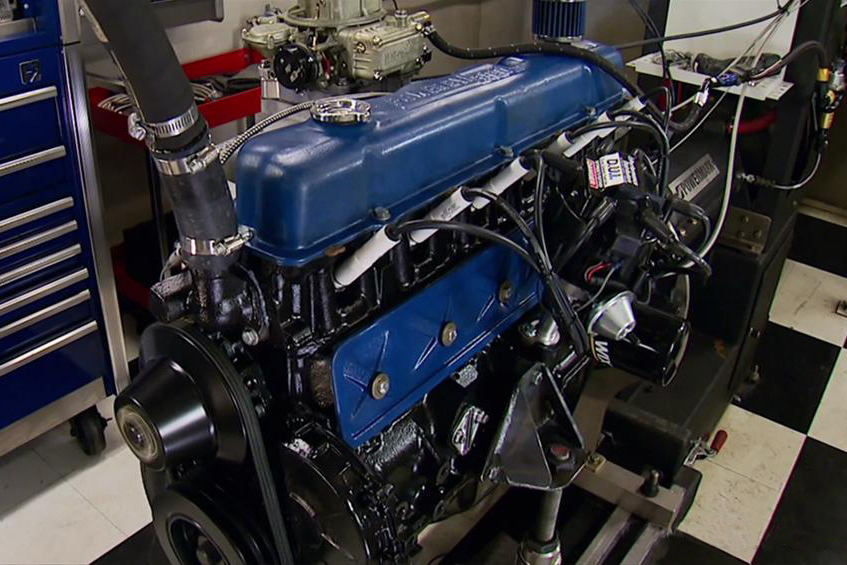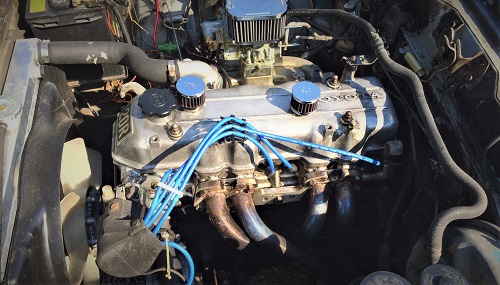Sure, everyone loves a 426 Hemi.
350 Chevy? Yep, found dang-near everywhere.
And even non-Ford folks can appreciate a nicely tuned Windsor.
…But there are plenty of other engines out there, reliably powering classic cruisers, work trucks, and humble people movers—just without the panache and fanfare of those more popular powerplants.
So on its social media pages, Summit Racing asked you to fill in the blank:
***
“The most underrated engine of all time is _______.”
***
The Reader Contributions poured in by the hundreds. We collected ten of the most under-the-radar engines from those responses, and here’s what we came up with. (Spoiler alert: You certainly like your inline sixes!)
Please note, sometimes folks gave us a specific engine, others gave the entire engine family, so we used both interchangeably here.
***
10. Volkswagen Air-Cooled Boxer Four

While this family of engines can be found in millions of vehicles, a lot of folks don’t realize that it has some bona fide performance potential. “You can do a lot to these engines” says Mike L. Then Eddie B. reveals some specifics, like “bored and stroked and turbocharged.”
They’re easy to work on too. “My mom rebuilt one of these on the kitchen table and installed it herself,” Kane D. explains.
Volkswagen-derived fours wound their way into plenty of vehicles, including boats, trikes, aircraft, and even a few Porsche models. These engines are delightfully simple, relatively reliable, and affordable. What’s not to like here?
***
9. Pontiac Iron Duke/Tech IV

If Rodney Dangerfield was an engine, he’d be the 2.5L Iron Duke. In stock trim, the Iron Duke was loud, buzzy, and not that powerful—but that sucker would run forever with minimal maintenance. Trent P. pointed that out too. “None of them were powerhouses, but still darn good reliable engines.”
Though made by Pontiac, the Iron Duke found itself in a mystifying array of vehicles, from Postal Jeeps to Camaros, Fieros to S-10s, and seemingly every 1980s economy car in GM’s stable.
But despite those pedestrian applications, some readers were quick to point out that the 2.5L four-banger had some potential too. “I’ve seen a few that have been turbocharged and lay down some crazy numbers,” Chris C. tells us. Indeed, the Iron Duke was the Swan Song for Pontiac’s legendary Super Duty engine lineup, and used in plenty of ARCA and IMSA racers.
***
8. Oldsmobile V8

A lot of commenters offered up the various iterations of Oldsmobile’s second-gen V8, like the short deck 350 and the tall deck 455. Heck, Robert P. even tossed the Olds 260 into the conversation. From brute power to gas-sipping efficiency, the Oldsmobile V8 wore a lot of hats around the halls of GM and it picked up plenty of fans along the way.
The engine took to performance upgrades well, and Ulises M. proved that. “My little iron-headed 350, bored .030 over, lays down 11.6s on pump gas.” (Oh, and let’s not forget that Oldsmobile helped carry Pontiac’s performance mantle in the 1970s, either.)
Reader Marco M. mentioned the ill-fated Oldsmobile 350 diesel—but we’re pretty sure he was joking. (Marco, please tell us you’re joking!)
***
7. AMC 232/258 Inline Six

Sometimes an engine is underrated simply due to the shadow cast by its successor. Case in point: the carbureted AMC 232/258 (3.8/4.2L) inline sixes. While there’s no question that the Jeep 4.0L is one of the best off-road engines ever made, many folks don’t realize that the EFI 4.0L actually evolved out of an inline six originally designed to power AMC passenger cars. Once AMC bought Jeep though, the sixes wound up in the CJ and the rest, as they say, is history.
In fact, that’s the first thing Juan S. points out. “In production 42 years—so good that Chrysler used it until 2006.” Then, John H. chimes in with “it comes with 7 main bearings,” alluding to its durability. Finally, Kent A. quips “had one in a Jeep and loved it.”
***
6. GM 4.3L V6

What would happen if you took away cylinders #3 and #6 from the trusty small block Chevy V8? Well, you’d get a new family of super-durable 90 degree V6 engines that culminated in a 4.3L six that propelled plenty of cars and trucks in the GM portfolio. Randall F. says “I’ve always had great experiences with 4.3L V6 GM motor,” and Allen M. follows up with “not a powerhouse, but boy they will last forever.”
Nicknamed the “3/4 350,” the 4.3L version shared much with the SBC it was based off of, including some valvetrain parts, bellhousing bolt pattern, and a 4 × 3.48 inch bore and stroke. (Just don’t confuse the GM 4.3L V6 with the “Baby LT1” LT4 V8.)
***
5. Pontiac OHC Sprint Six

So far, most of the engines on this list were just ordinary powerplants that did their jobs really, really well. The Pontiac Sprint 6 is an entirely different story.
Using revolutionary (for the era) overhead camshaft architecture, the Sprint Sixes could’ve been a legit replacement for V8 power. Though thanks to cheap, plentiful gas in the 1960s, the innovative design became a classic case of being too far ahead of its time. Stephen F. nominated this one, and quite a few folks agreed. Plenty of others commented on the Sprint’s rev-happy personality and signature exhaust note.
Want to learn more? We wrote an entire article on the Sprint 6.
***
4. Studebaker V8

“Overbuilt like a tank,” explains Michael H. and Dee I. chimed in with “as tough as they come.”
It’s easy to see why too. Launched in 1951, Studebaker V8s featured forged internals, a gear-driven cam, solid lifters, and 18—count ’em—18 cylinder head bolts. So it’s no surprise that these engines took to forced induction so well, usually by way of a Paxton supercharger. In fact, in super rare “R-3” performance spec it easily made over 300 horsepower. We sat down with known Studebaker expert Malcolm Berry in an episode of the OnAllCylinders podcast and he told us plenty about these engines.
Maybe though, the ‘Stude V8 is better summed up by another commenter, Austin B., who simply said “Studebaker is all around an unsung hero in the car enthusiast community.”
***
3. Briggs & Stratton L-Head

“There are millions of those out there,” Adrian M. says—and we believe him. The humble pull-start Briggs & Stratton powered untold numbers of lawn mowers, rototillers, and snow throwers. (In fact, Jeff M. boasts that he’s “still got 4 or 5 laying around.”)
But it’s their adapted use in minibikes and go-carts that makes these little four-stroke thumpers so endearing. In fact, Briggs & Stratton now offers a lineup of crate engines for go-carts and Jr. Dragsters that’ll keep you from pillaging your neighbors’ lawn equipment.
But perhaps Nate D. said it best, when he proudly stated “this little engine is what sparked my interest in combustion engines and hot rodding!”
***
2. Mopar 225 Slant Six

Behold Mopar’s “Leaning Tower of Power.”
While the Slant 6 is easily overshadowed by any number of Chrysler V8s, it is nonetheless a huge part of Mopar history. Like many of the engines on this list, it persevered for decades, adapting to the changing times through fuel injection and evolving emission control systems. And it earned plenty of supporters in the process. “It’ll run forever,” explains Alfred B., while William H. tells us that it is “bulletproof and makes great power.”
In fact, the folks at Engine Power practically doubled a 1971 Slant Six’s output, you can read about that project here.
Yet Pat S. has a bit more pragmatic take on the Slant Six. “A little beast. Gutless but they just don’t die.”
***
1. Ford 300 Inline Six

Honestly, we hesitated to include this one. After all, it’s pretty much beloved by the Blue Oval brigade.
Yet at the same time, the 300 doesn’t have the pizazz of a 302, side-oiler 427, or even a Mod Motor. But the sheer overwhelming response the Summit Racing folks got for this one demanded that we not only include the 300—we had to lock it in at Number 1 on this list.
So rather than us prattle on about the 300’s virtues, we’ll let a few of the readers give you the skinny:
- “The best motor Ford ever built.” – Keith F.
- “Ran forever and was used everywhere.” – Mark K.
- “Tough as nails.” – Joe M.
- “Great engine.” – Bob M.
- “A true workhorse.” – Robert C.
***
Admittedly, there were a ton of great engines that didn’t make the top 10 here, but they have legions of fans nonetheless. So, which ones did we miss? Any glaring omissions on the most underrated engines here? Let us know in the comments section below.

Loved loved the Slant 6. Had several cars with that engine! Lots to improve it available. From Hollie Ace Carburetors to Marine intakes, lots of toys!
i had a slant six with a bad wrist pin. being low on money , I pulled into the local junk yard tore it down pulled out the offending piston and ron , pulled one out of another car, using the same brgs put it together and ran it for another fithy tho with no problems . wild huh
I Love the 2.3 Ford engines of the 80’s. Turbo or not they are great engines!
Dang near bullet prof.
On MY list…
Kaiser-Jeep “Tornado” 230-cid OHC-6
Packard 374-cid OHV V8
AMC 327-cid “Rambler V8”
Kohler K-series L-head
Honda Parallel-Twin 160/175/250/305/350
Check out the Kohler in this old Cub Cadet–it’s still running strong in the 21st century.
…
(And don’t get me started on Honda’s P-Twins!)
Yep, the 300 Ford 6-cylinder is undoubtedly the best non-V8 engine, perhaps ever. They do run forever, can be built to provide solid, if not overwhelming, performance, and have been used pretty much everywhere. Other 6-cylinder engines are also very reliable, very useful, but the FoMoCo 300 is the top dog.
The 4.3L / 262 cu. in. GM V-6 is an amazing engine. I have personally run two past 300,000 miles with no issues, and built-up a third (a slight oddball version – an ‘85 with a two-piece rear main seal and a factory carburetor, with zero engine management equipment from the factory). The one I built up responded astonishingly well to typical engine tricks, and really acted like it was much bigger than it was. I’m running a ‘90s-vintage GMC C1500 with an NV3500 currently that is one serious working truck!
CADILLAC 500, if you want torque there is no other!
The toyota 22re should not be overlooked. As long as it had “some” oil it would run without an issue. Durable, easy to rebuild, and fairly peppy for a small engine.
That’s funny you mention that Ben, because it would’ve ranked number 11 on this list. It’s easy to love Toyota’s R Family for all the reasons you mention. In fact, here’s one we spotted in a 1973 Celica GT.

Two engines come to mind-both Olds. You mentioned the 350 and the 455; both good. But there was the 425 (65 to 67). Same bore as a 455, but shorter stroke and all 425s had steel cranks. Same with the 330 small blocks- all had steel cranks. Either could be built to drag race and the bottom end could take more R’s. I bracket raced a .060 over 425 and never had a lower end issue.
To teach my son a lesson about the importance of oil, I got a trashed, but running Pontiac Astre for $40. I drained the oil and started the car up. It ran for 30 minutes with no sign of quitting. After ten minutes of redlining it, it finally threw a rod. What a great lesson.
Fun fact: the Astre was the first car to ever get the Iron Duke! (And you may want to watch this too.)
I’ll admit the Ford 300 6 cylinder was a great torque engine for a truck. But the Chevy 292 6 cylinder was very close power wise. I work while in high school at an independent tire store in my home town. The store had several of Chev. C10 fleet side pickup for delivers to other tire stores. I had a load of big truck tires and it was obvious at lower RPMs these pickups pulled a load at lower RPM than did the one truck which had a 283ci. Engine. The Chevy 292 like the Ford 300ci. had a long stroke
We have a feeling you’d like this article then: Ask Away! with Jeff Smith: The Pros and Cons of the Chevy Inline Six for Old-School Hot Rods
When choosing [ if you have a choice ] an i.c.e. to enhance look at oiling system first then after market then class wins now the big question ???
Will it live on your budget !!. is it a pouch or a contender. Research is time
consuming , mistakes are expensive. YOUR NOT SMARTER then the factory!
Make longevity choices on motor builds!!. OR buy from a relatable source
with a warranty! Don’t be scared to learn slowly [ cheeper ] fast big $$$$
The internet has some relatable sources & IMO junk info. My full build for a
track day i.c.e. in a 2100 lb.coupe THATS right folks a 2.3 PINTO [ you can now laugh as long as U want ] Street & track from 2013 still turning 7k to 7850 on track shifts with 14.746 miles on that motor. stock block stock crank.better rods $57 [ 18 track heat cycles on used R7 with no drop off ]
each 60 $ pistons. big valves good oil system/ its a sohv side oiler 155 cid.
Yes its small light & makes 1/2 the power of a Boss 302 that means the ware rate on parts is the same just at 1/2 the cost [ IMO 1/3 after 10 years ]
Remember
good Gearing will overcome a improperly tuned pour excuse for a motor tune.
A no/low hp
One engine that deserves mention is the Chrysler Plymouth L-head six. They came out in the 1930’s, powered all kinds of military equipment through WWII including the PowerWagon and half-track, and served in Chrysler, DeSoto, Dodge and Plymouth cars through the early fifties. Simple, sturdy, good torque, run forever.